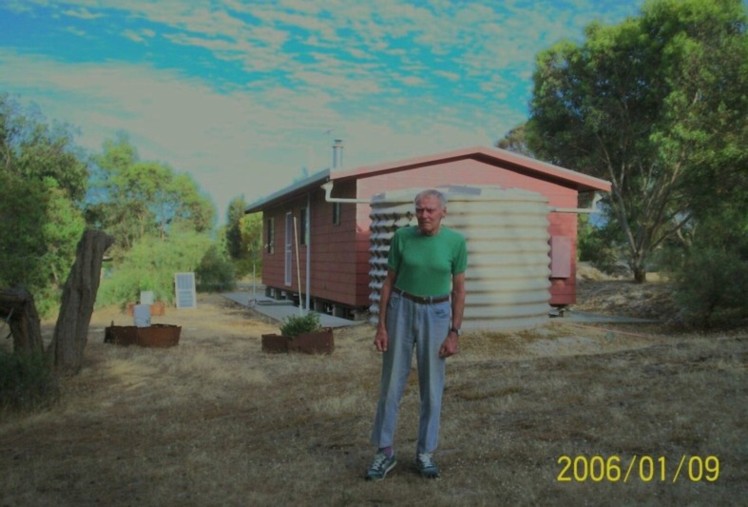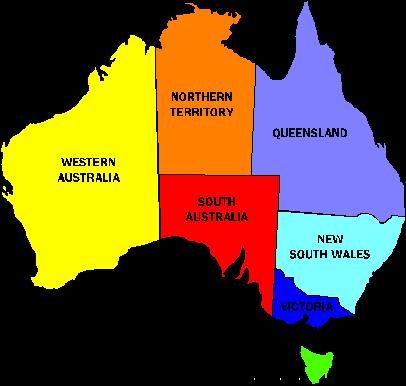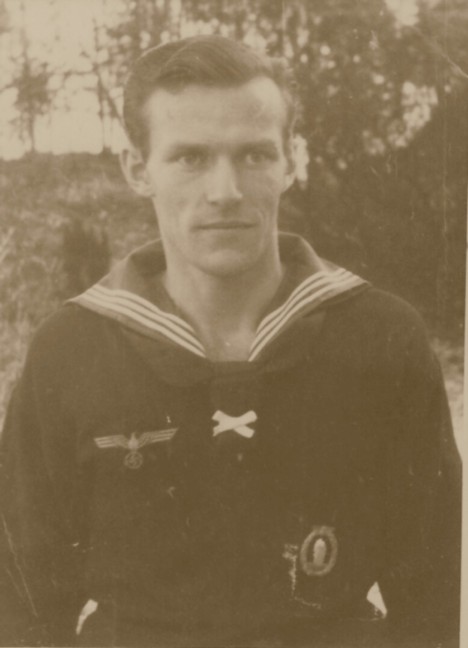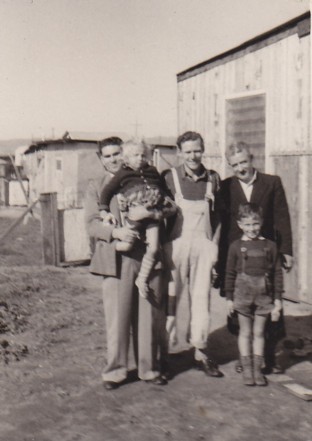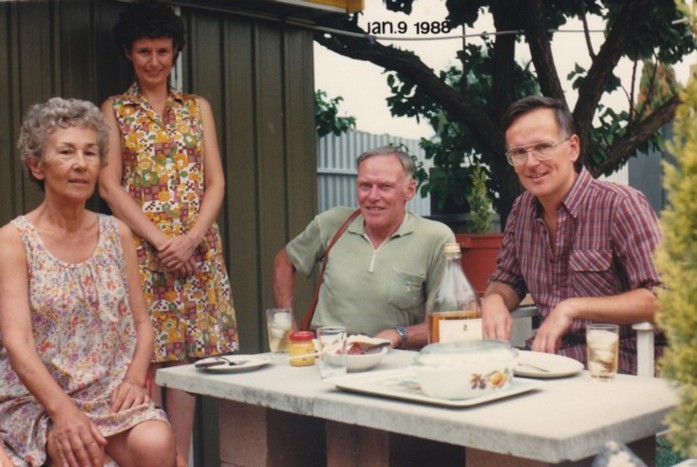Walter was born in Hamburg November 3, 1921 and had one sister born in 1926. As a youth he enjoyed long bicycle trips through the countryside, often leaving Hamburg for days at a time. Later, as an adult, he described how he used to convert two or three old discarded bicycles into one usable bike.
Bicycle trips were also an acitivity of the Hitler Youth in which Walter was an unwilling member. Once in 1974 when deciding not to watch a documentary about the Nuremberg rallies on television he said, "I experienced enough of that stupidity as a teenager and was forced to take part and don't need any reminders. I knew from Jewish achievements in science that Nazi propaganda which declared them inferior was nonsense."
Walter went to highschool and did well at physics (including electronics) and chemistry. His occupation as listed on his marriage certificate and children's birth certificates was "Laborant" i.e. laboratory worker.
Walter served as a radio operator on two "Vorpostenbooten" during World War II. These 350-ton ships had a crew of about 40 and reported on enemy positions, destroyed mines, and accompanied and protected cargo ships. Germany had several hundred Vorpostenboots. Wikipedia defines them: "German patrol boats...tasked with...coastal patrol, ship escort and naval combat... Vorpostenboots typically carried one or two medium calibre guns (88mm), a large number of light automatic anti-air artillery pieces and...machine guns... While Vorpostenboots were able to engage and defeat...small motor gun boats they were not powerful enough to effectivley combat warships of destroyer size or larger."
The first Vorpostenboot on which Walter served was a converted whaling boat and known as 15/10 [i.e. Flotilla 15, Number 10]. It was initially stationed at Kiel, then in 1941-1942 at Fecamp near Le Havre, France. It patrolled the coast from Rotterdam in the north to St Malo to the south.
The second Vorpostenboot — 6/21 [Flotilla 6, Number 21] — was initially stationed at Wilhelmshaven and in 1943-1944 at St Nazaire, France. It patrolled from Brest to Bilbao (on Spain's north coast).
When 15/10 was sunk in 1942 Walter was in a Military Prison (Militaer Gefaengnis) as a lawless person (Ungesetzten) followed by 4 1/2 months in two punishment batallions (Strafkompanie) named STA 30 and STA 31, the latter stationed in Latvia. There he became the batallion's electrician and avoided normal-dangerous duties.
In 1943 Walter was back in Vorpostenboot service and in September received a Minesweeper War Badge.
Walter was wounded during a bomber attack on May 10, 1944 — metal from a bomb-explosion entered his right side. He saw a friend lose both legs and bleed to death on deck. On D-Day when the British and Americans landed in France Walter was in a military hospital in Paris. He was taken out by train shortly before Allied troops took the city on August 25, 1944, and was on one of the last trains to leave Bremen before the British took the city on April 26, 1945. Officially he was at this time missing [Vermisst] presumed a prisoner of war. After German forces in Hamburg surrendered on May 3, he walked home. In 1974 Walter's mother recalled that his wound was slow to heal, and they had little food, and she went to an orchard to get a few apples for him but was refused.
Walter in 1944
His Minesweeper Badge is on his lower left chest
Marriage Certificate 1951
Walter met his wife to be, Ruth Hildegard Schoemberg (1927-1993) in 1947. She had fled from Leipzig, East Germany, and worked at Philips (in Hamburg) which manufactured electrical components. In 1948 they lived in a one-room flat in the suburb Eidelstedt and married in 1951.
Walter had three children:
1 Walter Klein (1946) with Paula Klein of Steinwenden;
2 & 3 Bernhard (1948) and Gilda (1951) with Ruth.
In May 1954 Walter took his wife and children to Australia on the Anna Salen. [Anna Salen News] This ship was built in 1939, taken over and refitted for the US Navy during WWII, rebuilt as a passenger liner after the War and re-named Anna Salen, and used from 1949-1962 to transport emigrants.
In 1955 Walter built a wooden house in Adelaide (Fourth Street, Wingfield) mainly using wood from large wood crates which had to be taken apart. The foundation for a brick house was laid that same year and the brick house completed in 1960. He was employed at Holden or Kelvinator in Adelaide during the warm months (i.e. October to April) of every year, and found work in Northern Territory or Queensland from May to September.
Walter (centre) with his daughter and son outside his wooden house in springtime 1955 when construction was complete except for painting
Walter returned to Germany in 1963, divorced Ruth in 1966, and married Yvonne Weisst of Hamburg in 1967. He built a house in Wiegersen and another in Sallahn.
In Germany he worked initially for Anton Kaeser, and then for 13 years at Beiersdorf the Hamburg-based multinational corporation which manufactures skin-care/beauty-care products, where he did electrical maintenance.
From 1987 to 2006 he went to Australia almost every summer for about two months.
In a 2001 readers report in a magazine named Investigator Walter wrote: "I was an electrical engineer but am now retired. Much of my retirement is spent in travelling and I've visited most European countries several times. A recent trip by car started in Germany and covered the Baltic countries: Denmark, Sweden, Finland, Estonia, Latvia, Lithuania and Poland. I've been an Australian citizen since 1960 and still visit Australia every summer." (Investigator 77, March, 2001. http://ed5015.tripod.com/AREADERS.htm)
Ruth Mittelstedt, Gilda, Walter and Bernhard in Bernhard's back yard in Adelaide, January 1988
From 1954 to 2006 Walter travelled to Australia 22 times.
This photo is from his final visit when aged 84